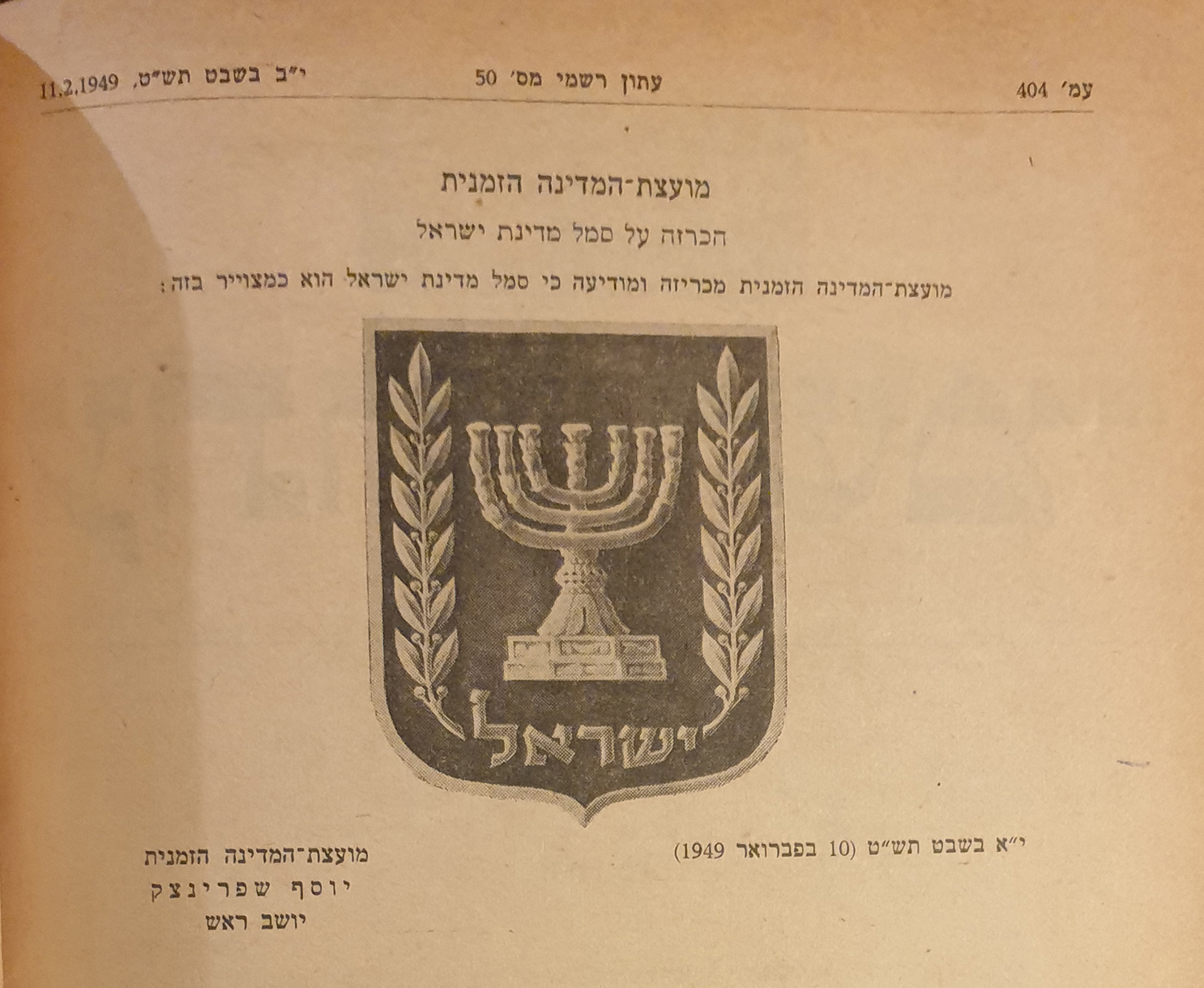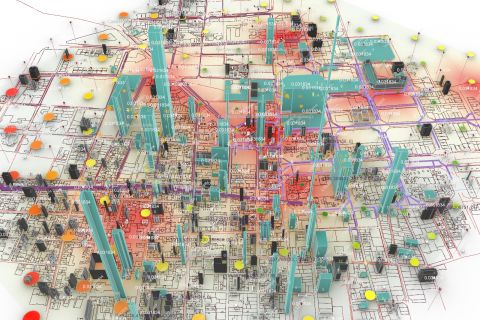Bezalel News
חדשות בצלאל
أخبار بتسلئيل
Symbols in Controversy
Independence day is a holiday of national symbols: symbols of the state, the flag, traditional Independence Day traditional posters, and even national bills of currency. We gladly celebrate them, and tell stories of how they came about, explain their components and the difficulties related to choosing them. But these symbols whose shape and necessity we now take for granted, were accompanied by fierce criticism when first announced.

After the official announcement of the symbol of the state designed by Gabriel and Maxim Shamir, serious criticism was not late in coming: "This suggestion … "is a terrible choice aesthetically ", cried Gershom Shalom, the editor of "Haaretz" newspaper, "and if this symbol is displayed in the coming days above the constituent assembly… "it will be a worldwide disgrace for its lack of taste and culture…" Shoken explained, "…two giant olive branches, whose leaves look more like two swords than the leaves of a tree that stand as a symbol of peace. The empty space above the Menorah is ugly, and it manifests the utter helplessness of its creator. The word Israel is written in letters that testify to a complete ignorance of the Hebrew typography."
Not only the aesthetics worried the critics, but also the quality of the sources that the designers referred to. Gabriel Talphir the editor of the periodical "Gazit", complained about the exaggeration in basing the choice on the archeological finding: "The truth is that archeology is a plague of the state and its government, and now is the time to distance ourselves from this enchantment. "We are bound to find new values that the state needs". He also insisted on changing the symbol: "At any cost we must change the shape of the symbol… it is not Israeli, the odor of dead bodies emerges from it. Accepting the symbol in this way is shameful not only to those who made it, but to all the artists in the country and to all art institutions. If they have some sense of pride, they must rebel, pour letters and memos to parliament members, so that, for God's sake, they will correct and change the symbol."
In fact, the symbol was not changed, but at times when symbols are changed, upgraded or rebranded to help private, commercial or government entities to improve their image, there are questions to be asked; is it possible that what helps commercial companies can help nations as well? Do countries need, or should they, update their symbols according to the spirit of the times? How would the symbol of Israel look like were it to be designed today? And how eternal are the symbols of the Eternal People?








